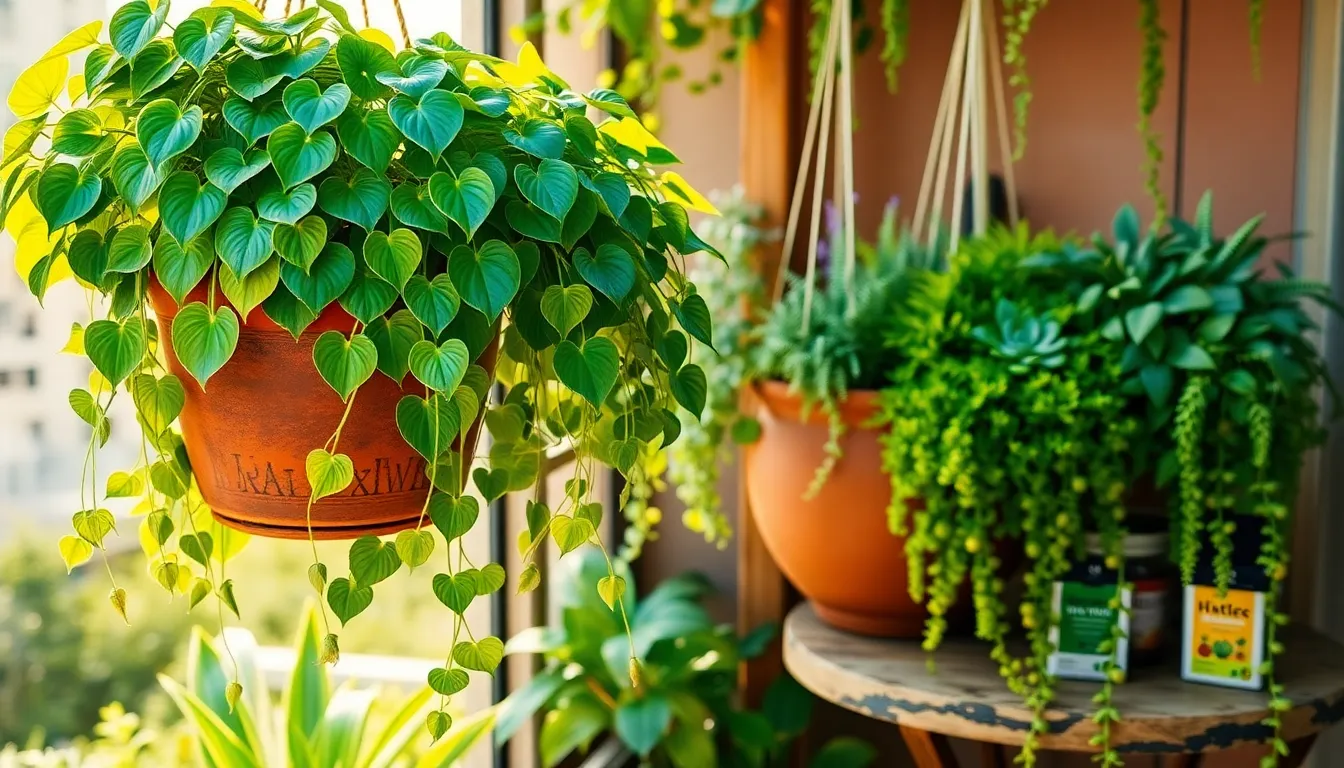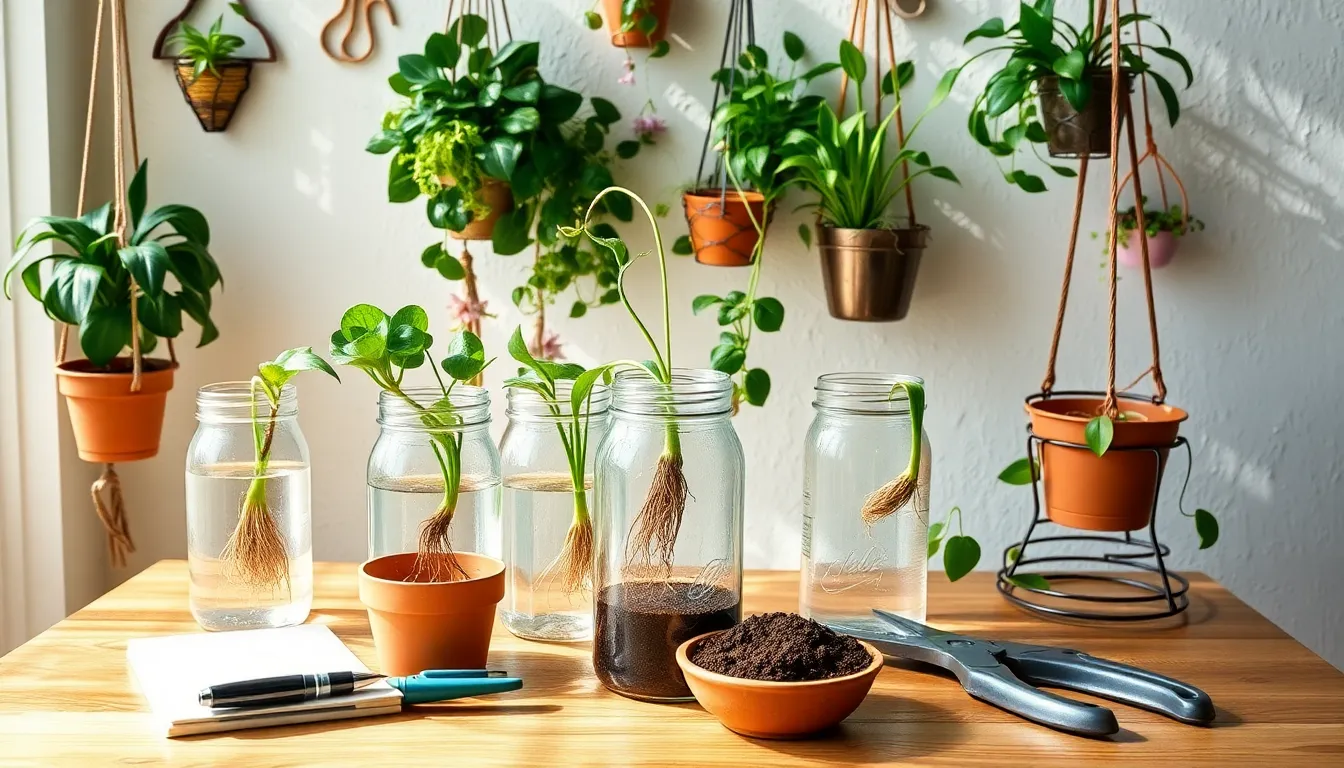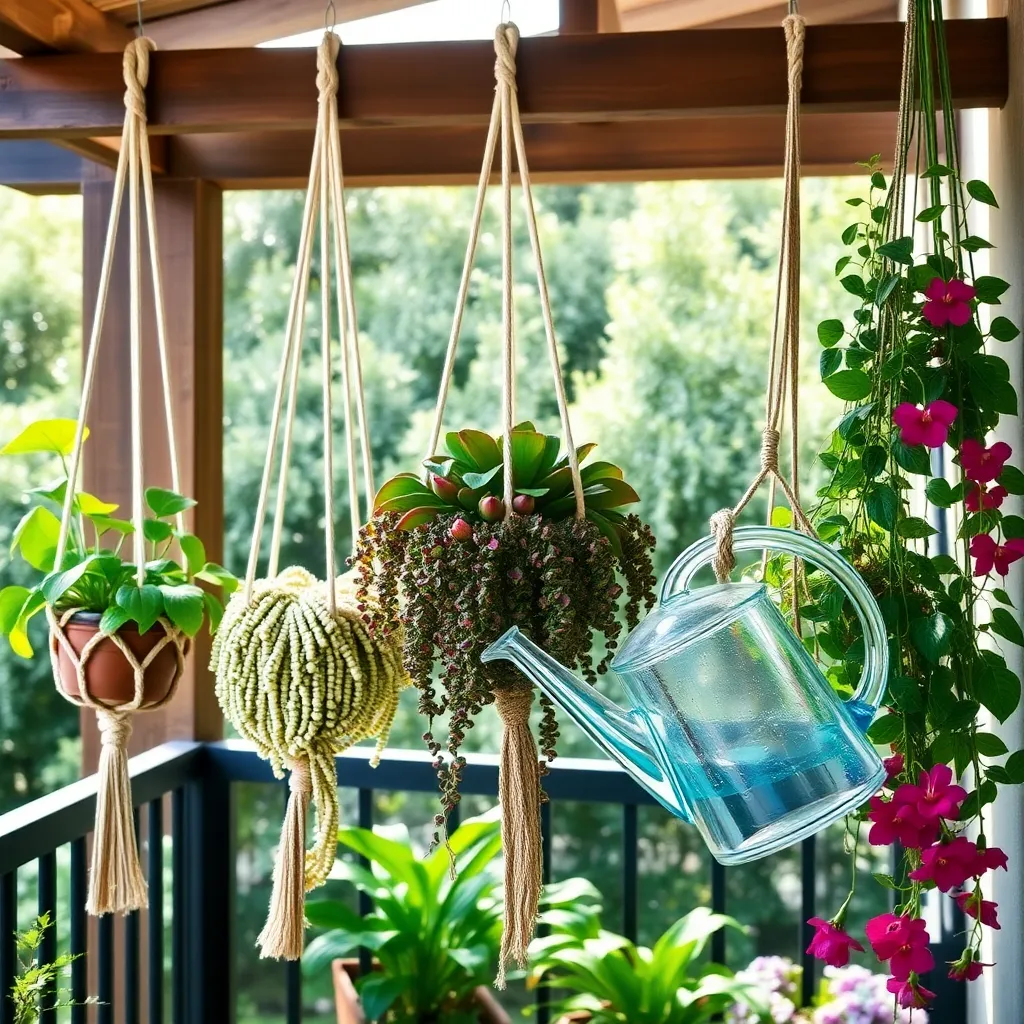There’s something uniquely enchanting about hanging plants that capture the heart of both novice and seasoned gardeners alike. Suspended in mid-air, these botanical beauties bring a touch of whimsy and elegance to any space, transforming it into a vibrant oasis. However, ensuring that your hanging plants thrive throughout the year requires a little more than just a green thumb; it demands an understanding of their special needs, which change with the seasons.
In this article, we’ll delve into the art of caring for hanging plants, providing you with practical tips to nurture them through every season. Whether you’re looking to perfect your watering schedule, choose the right soil, or understand the lighting needs, we’ve got you covered. No matter your level of experience, you’ll find that tending to hanging plants can be both rewarding and manageable. Let’s embark on this gardening journey together, where the joys of lush, cascading greenery are just a few mindful steps away.
Select the Ideal Location
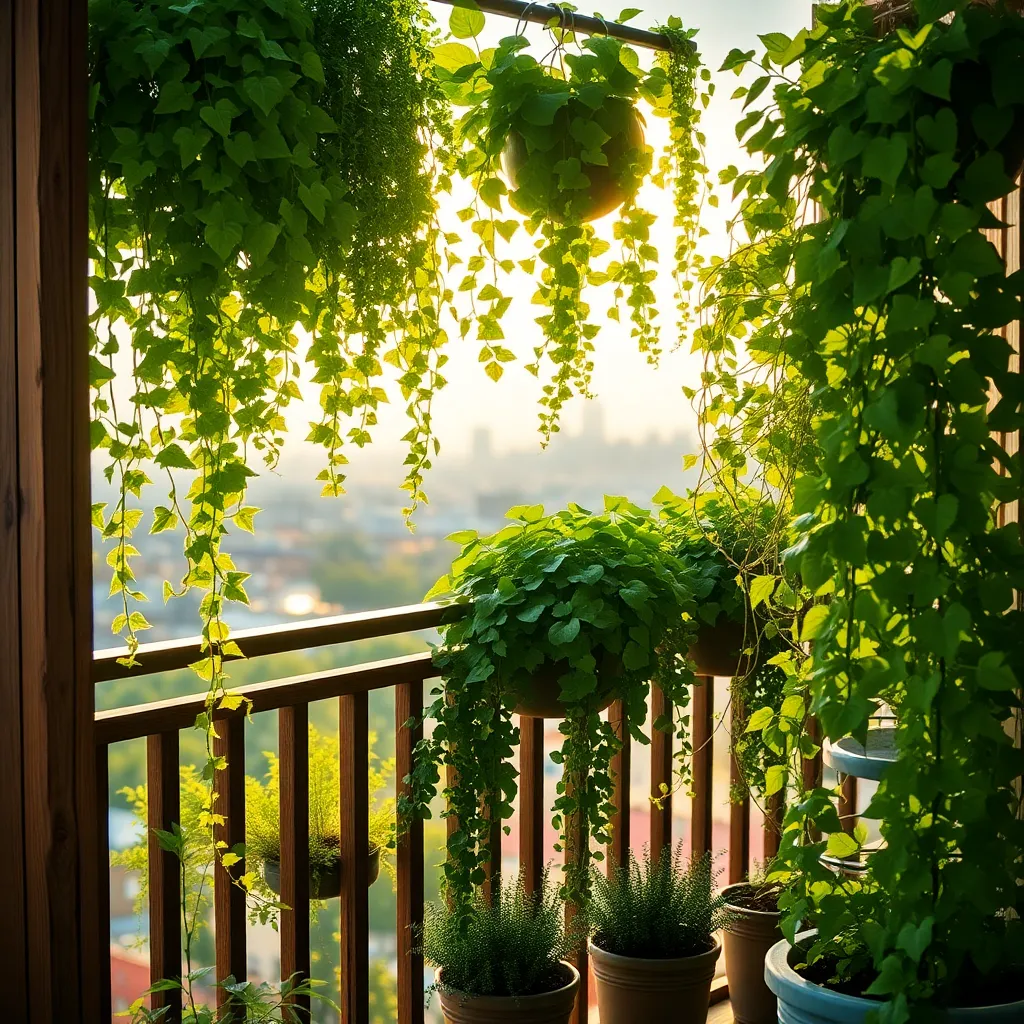
When selecting the ideal location for your hanging plants, consider the amount of sunlight the area receives. Most hanging plants, such as ferns and pothos, thrive in bright, indirect light, making a spot near an east-facing window ideal.
Ensure the location is sheltered from strong winds, as these can cause damage to delicate foliage. Placing your plants in a protected yet airy environment will help them flourish.
Humidity is another critical factor, especially for tropical plants like orchids. Bathrooms or kitchens can be excellent locations due to their naturally higher humidity levels.
For gardeners with more experience, consider using a hygrometer to monitor humidity levels and adjust as needed with a humidifier or pebble tray. This extra effort can make all the difference in maintaining lush and healthy hanging plants year-round.
Water Consistently and Wisely
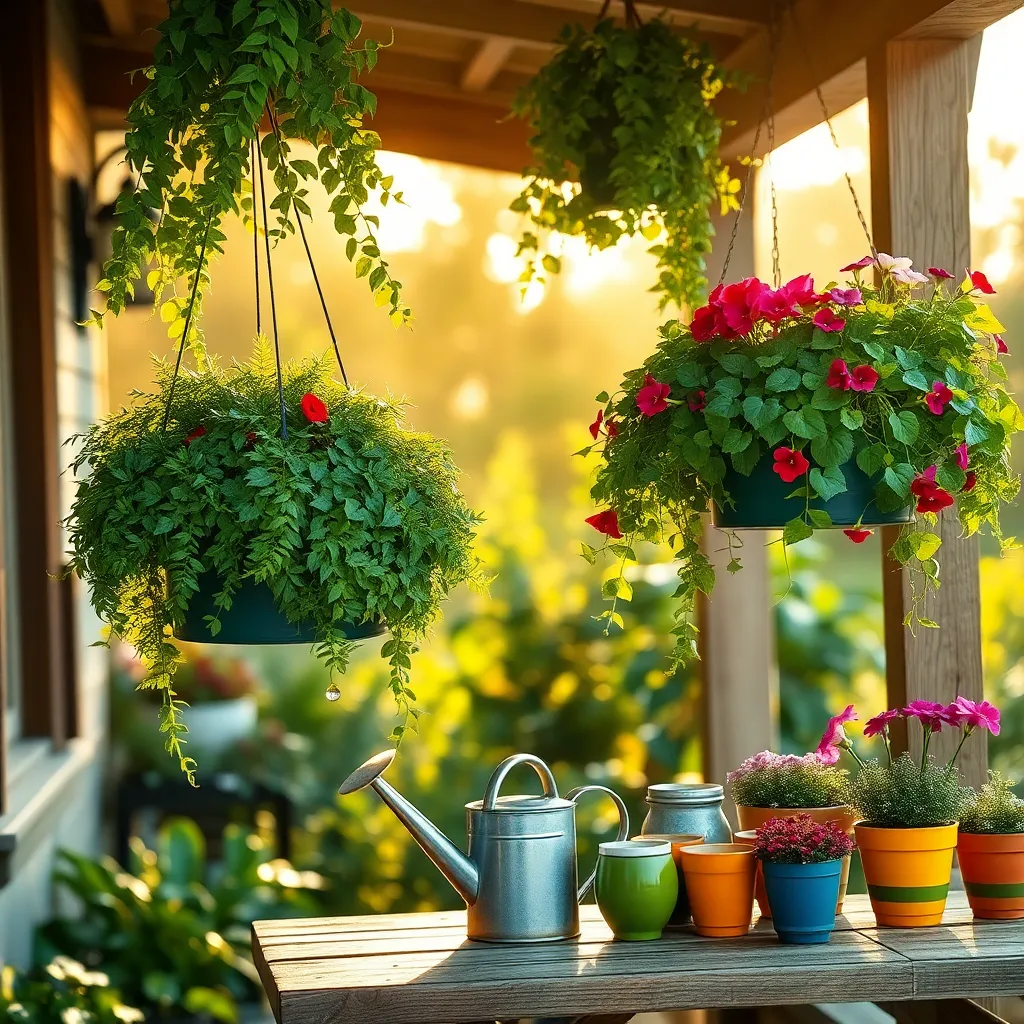
Watering your hanging plants consistently and wisely is crucial for their health and longevity. It’s important to check the moisture level of the soil daily, especially during warmer months when evaporation happens quickly.
Use your finger to test the top inch of soil; if it feels dry, it’s time to water. When watering, ensure the water drains through the bottom of the container to prevent root rot.
For more precise watering, consider using a drip irrigation system or self-watering pots. These systems can automate the process, ensuring your plants receive the right amount of water regularly.
During colder months, reduce watering frequency as growth slows down. However, always keep an eye on the specific needs of different plant species, as some may still require more moisture than others.
Prune Regularly for Health

Regular pruning is a simple yet crucial practice that keeps your hanging plants healthy and thriving. By removing dead or damaged foliage, you encourage new growth and prevent potential diseases from spreading.
To start, always use clean, sharp scissors or pruning shears to make precise cuts. Cut just above a leaf node, as this is where new growth is most likely to emerge.
Different plants have varying pruning needs, so it’s important to know your plant’s specific requirements. For instance, flowering plants like fuchsias and geraniums benefit from deadheading—removing spent blooms to promote further blossoming.
As you prune, take the opportunity to inspect your plants for any signs of pests or disease. Early detection allows you to take swift action, such as applying an organic pesticide or adjusting care practices to address any issues.
Fertilize with Balanced Nutrients
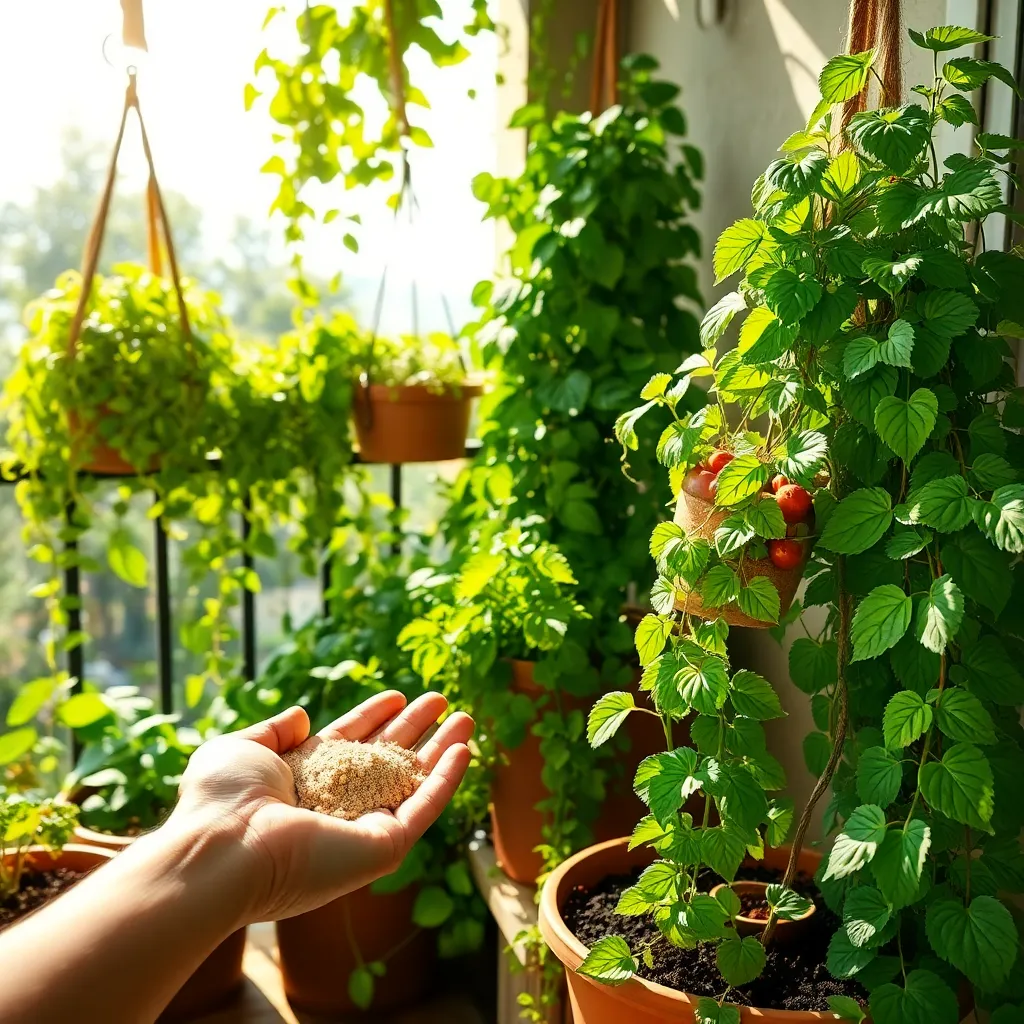
To keep your hanging plants thriving, it’s essential to fertilize them with balanced nutrients. A balanced fertilizer, such as a 10-10-10, provides equal parts of nitrogen, phosphorus, and potassium, which are crucial for healthy plant growth.
Apply the fertilizer every four to six weeks during the growing season, usually from spring through early fall. For best results, dilute the fertilizer to half the recommended strength to avoid overfeeding, which can harm your plants.
Consider using a liquid fertilizer for hanging plants, as it can be easily absorbed by the roots. Make sure to water your plants before applying fertilizer to prevent root burn and aid in nutrient absorption.
For advanced gardeners, incorporating organic matter like compost or worm castings can provide additional nutrients and improve soil structure. These amendments not only nourish your plants but also help retain moisture, which is especially beneficial for hanging baskets that tend to dry out quickly.
Protect from Seasonal Changes
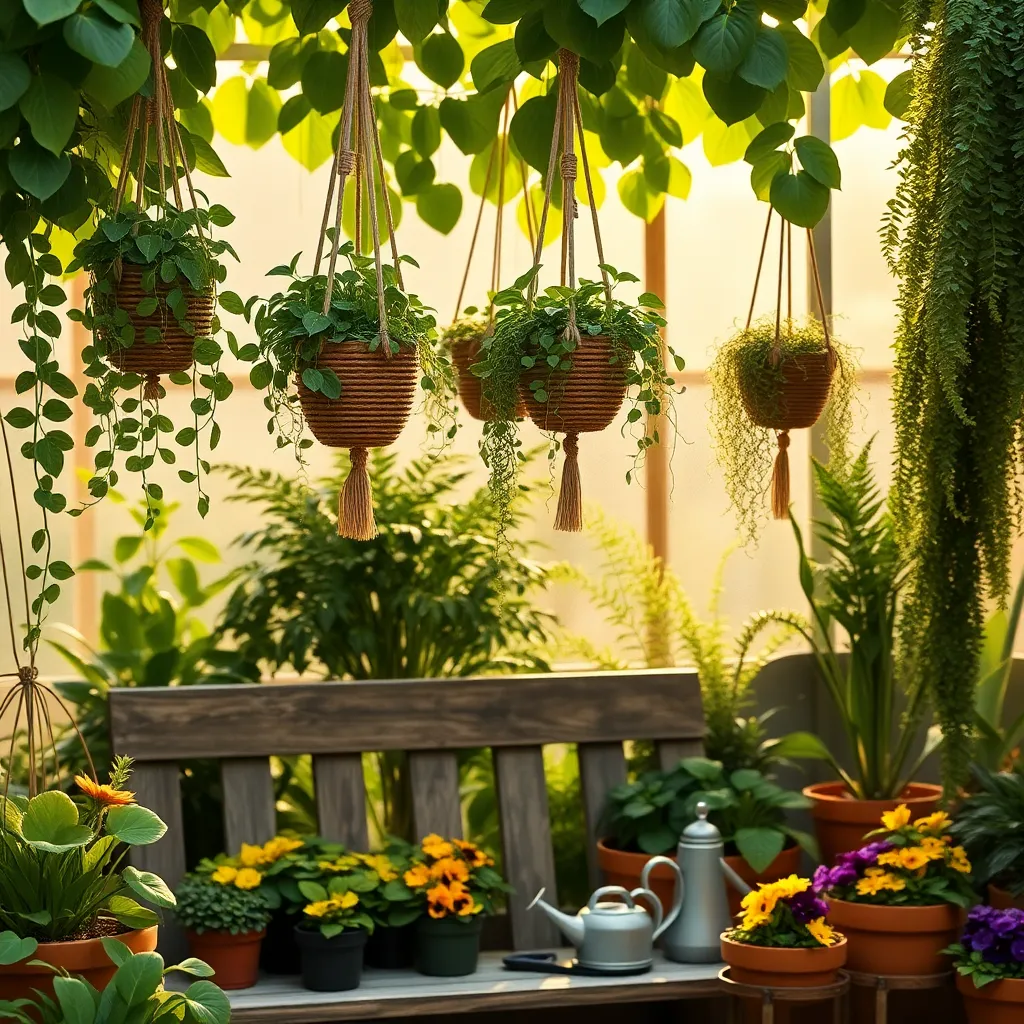
As the seasons change, hanging plants require specific adjustments to thrive. In colder months, consider relocating your hanging plants indoors or to a sheltered area to protect them from frost and cold winds.
Ensure your plants receive adequate light during winter by placing them near a south-facing window or using grow lights. Insulate pots with bubble wrap or burlap to maintain root warmth and prevent freezing.
During hot summer months, hanging plants need extra attention to prevent dehydration. Water them early in the morning or late in the evening to reduce evaporation, and ensure that the soil remains consistently moist but not waterlogged.
For those in regions with intense sunlight, use shade cloths to protect delicate plants from scorching. Additionally, rotating your hanging plants every few weeks can help provide even sun exposure and prevent one-sided growth.
Conclusion: Growing Success with These Plants
In nurturing your hanging plants year-round, we explored the vital relationship concepts of attentive watering, appropriate lighting, regular pruning, repotting, and pest management. These principles not only ensure the health of your plants but also mirror the care and attention needed in our personal relationships. Just as with plants, relationships thrive when nurtured with consistent effort and understanding.
As an immediate step, take a moment today to assess the needs of your hanging plants and consider how these principles can be mirrored in your interactions with loved ones. Whether it’s ensuring your plant gets the right amount of sunlight or ensuring your partner feels valued, small consistent actions can bring flourishing results.
To ensure you have this valuable guidance at your fingertips, bookmark this article for future reference. Let it be a reminder that both plants and relationships require continuous care and attention. As you cultivate these practices, envision the potential for your relationships to grow stronger and more resilient, just like a well-tended garden. Remember, every day is an opportunity to nurture and deepen your connections, leading to lasting success.


